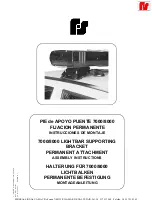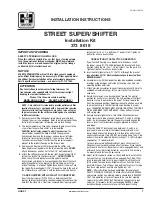
4-2
Loading the Vehicle
CAUTION:
Do not load the vehicle any heavier than the GVWR,
or either the maximum front or rear GAWR. If you
do, parts on the vehicle can break, or it can change
the way the vehicle handles. These could cause
you to lose control. Also, overloading can shorten
the life of the vehicle.
Your Driving, the Road and the
Vehicle
It is very important to know how much weight your
vehicle can carry. This weight is called the vehicle
capacity weight and includes the weight of all
occupants, cargo and all military-installed options.
The GVWR includes the weight of the vehicle, all
occupants, fuel and cargo. Three labels on your
vehicle show how much weight it was designed to
carry and other information important to the vehicle,
the Vehicle Identification label, Shipping Data Plate
label and the Certification/Tire label. These labels
are located on the driver’s door.
Notice:
Overloading your vehicle may cause
damage. Repairs would not be covered by your
warranty. Do not overload your vehicle.
Be sure to spread out your load equally on both
sides of the center line. Refer to Loading Your
Vehicle and Off-Road Driving in the 2006 Vehicle
Owner Manual for more information on vehicle
loading.
Shipping Data Label
A vehicle specific shipping data label is found on the
driver’s inner door panel above the vehicle
identification plate. This label includes the vehicle
loading curb and gross vehicle weight (GVW) (B) and
Summary of Contents for Defense 2006
Page 1: ......
Page 5: ...iv NOTES...
Page 9: ...1 4 NOTES...
Page 19: ...2 10 NOTES...
Page 21: ...3 2 Instrument Panel Accessory Panel Overview...
Page 31: ...3 12 NOTES...
Page 43: ...4 12 NOTES...
Page 97: ...5 54 NOTES...
Page 98: ...5 55 NOTES...
Page 99: ...5 56 NOTES...
Page 104: ...6 5 Date Services Performed Odometer Reading Serviced By...
Page 105: ...6 6 Date Services Performed Odometer Reading Serviced By...
Page 106: ...6 7 NOTES...
Page 107: ...6 8 NOTES...
Page 115: ...8 6 NOTES...
Page 116: ......
















































